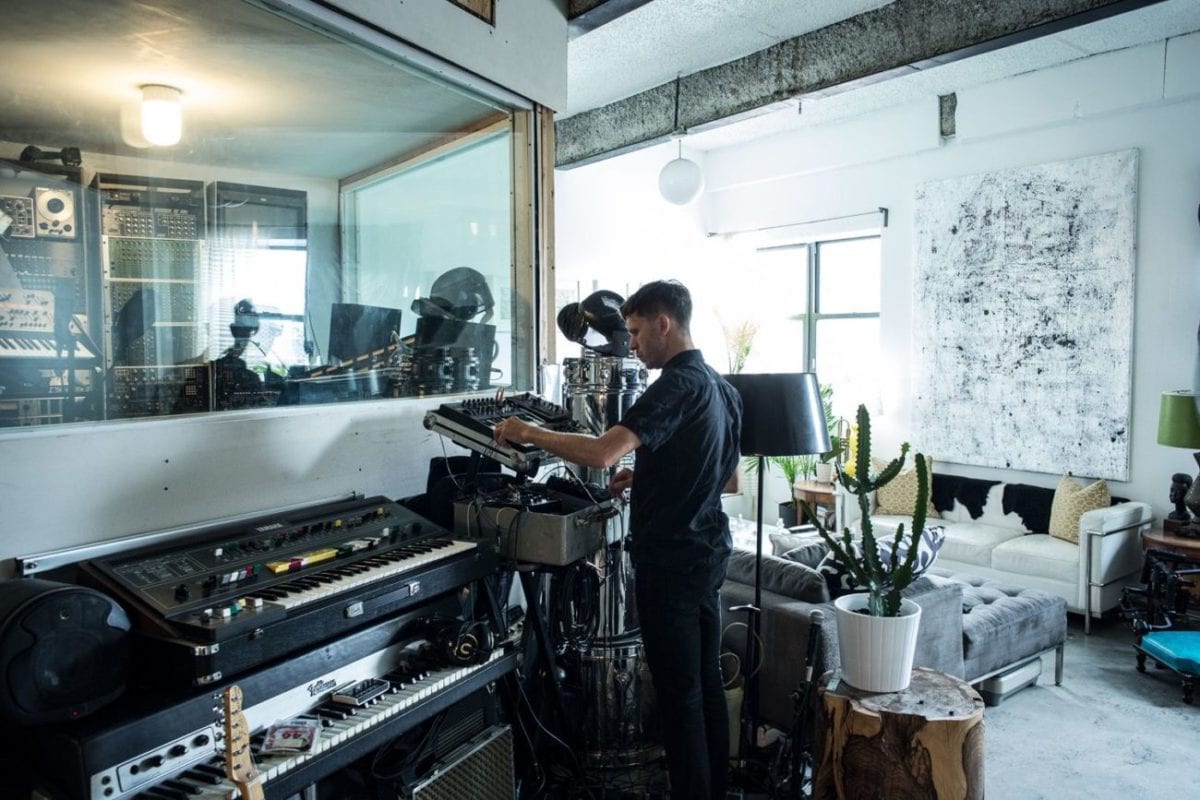
The musical journey embraced by Todd Sines is certainly none that could fit in a single interview or tentatively exhaustive review of his past accomplishments and ongoing ventures.
Alumni of former Stockhausen student Dr. Thomas Wells at The Ohio State University – responsible for the classic amongst technical learning books ‘The Technique Of Electronic Music‘, published in 1974 (and key to the foundation of Analogue Heaven, the world’s first analogue synthesis focused electronic mailing list), protégé of Detroit techno legends Daniel Bell and Carl Craig – who helped him release on labels such as Craig’s Planet E and seminal UK label Peacefrog as .xtrak and Enhanced, the Williamsburg-based producer has since moved on to grace the underground scene with a unique vision that spans the greater heights of techno, industrial, ambient and a wide array of off-field electronics that gave full vent to his savoir-faire in modular synthesis and beyond.
Todd eventually gave birth to one of his most daring and personal projects to date, the multi-faceted HELIC.AL, created alongside fellow collaborator Charles Noel – better known for his work as Archetype. With their debut album as Interval (the band Todd and Charles formed with close friend Andries Boekelman on bass) out earlier this year via their newborn outlet, and many more exciting projects to unfold in the coming months, the pair is off to hectic, mind-expanding endeavours. We caught up with Todd and Charles to discuss the label’s raison d’être as they dive into more than two decades of sound experimentations, research and intense reflection, as well as the making of their debut LP, ‘Transmit‘, which you can now stream in full down below.
Interview by Baptiste Girou
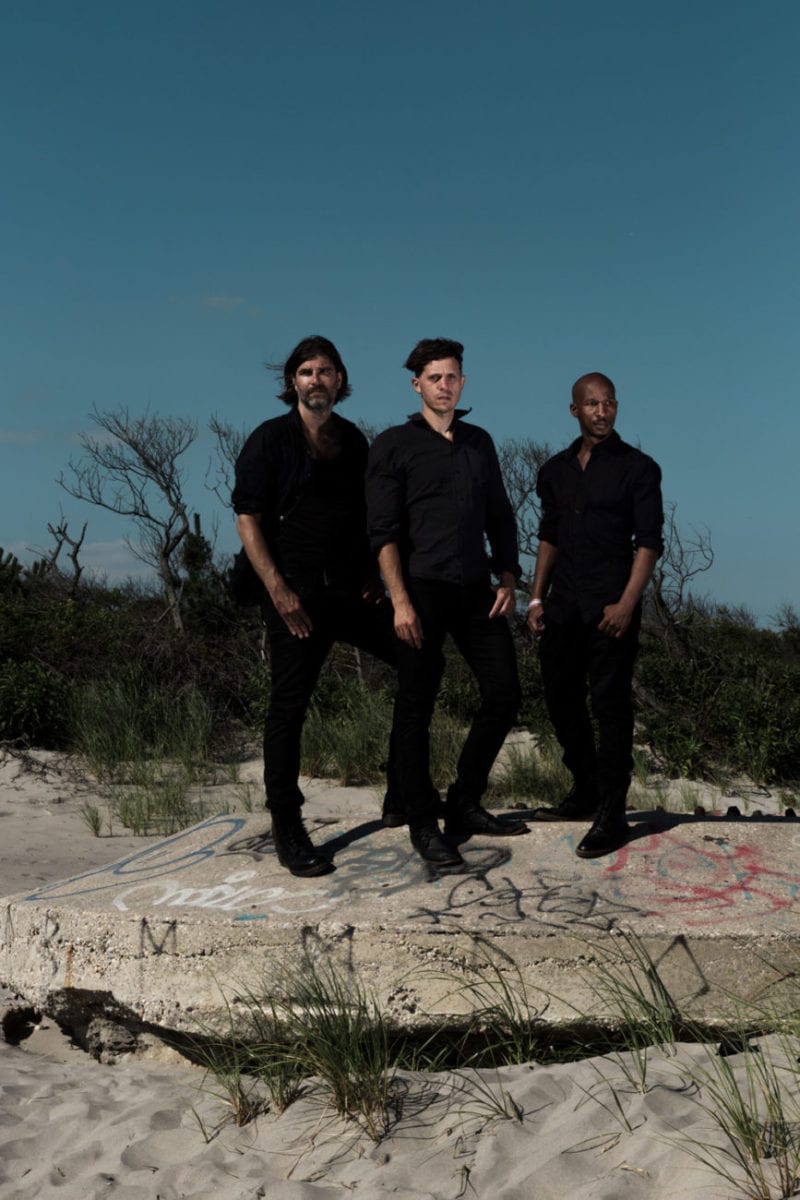
"HELIC.AL’s aim is to provide a blank canvas, the tools, the paint, and the time to allow for our ideas and those close to us to come to fruition."
‘Transmit’, the debut album of your new project – Interval – is about to come out. Can you tell us more about the concept and process? Where did you draw your influences for this LP?
Todd: Conceptually, there is a duality with the concept of ‘Transmit‘; we are regularly communicating and transmitting emotions and feelings, but we have sacrificed physical interaction along the way. Do we allow ourselves to be truly naked, exposed with our feelings when we’re with someone, or are we just propping up the image and illusion of the self we have created in the ether; it begs the question, which one is genuine… or real?
We are actors in a film or television series, where our followers are the captive audience. When we check in on each other, is a giant feed of Instagram, Facebook, Twitter, email, texts and phone calls enough to “connect”? I was lost in this illusion for a few years, and seen the affects on both myself and others. The need to constantly show; to transmit a pulse. We need to ping the emotional radars of those we admire, cherish, lust, or love; transmitting often, from a Distance; the name of the next record. This is the world we’re living in today.
Thematically, much of the material written over the course of 2010–2016; concurrently with material for our forthcoming double LP, ‘Distance‘, which will be an even deeper excavation of my heart. Despite what may seem dark, the emotions embedded in Interval’s songs are often a double play upon words. Isolation turns into insulation; despair begat destruction as we cope with pain and turn it into light. It is no secret that I self-medicate myself through my music and the range of Interval allows us to explore this.
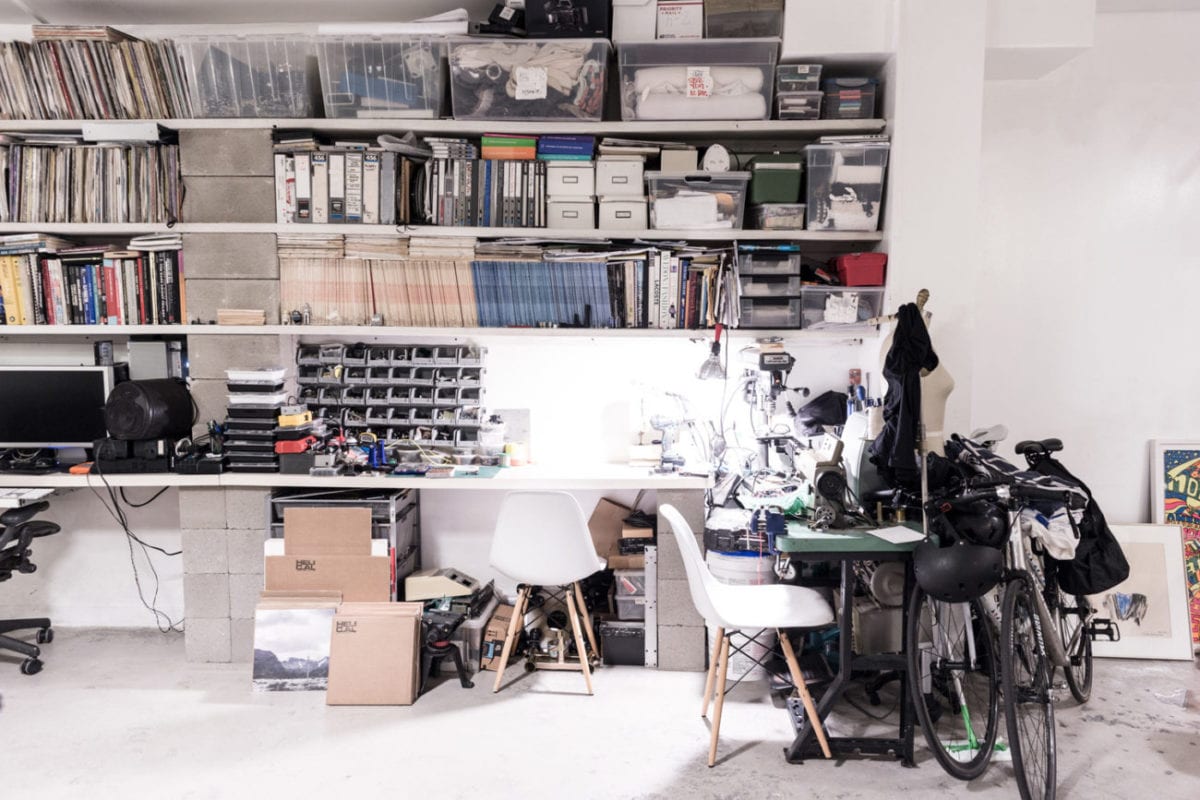
"I went 100% software for 3 years and I fucking hated it."
It openly cuts off from the use of computer, which – and it’s quite a prowess – wasn’t involved in any way on this project. As a matter of fact can it be considered as an ode to the unparalleled rawness and intense physical pleasure conveyed by toying with analogue gear?
Charles: Maybe it’s a sign of age but we have been doing this long enough (using both analog and digital means) to see a tool for what it is. Yes, different tools lend themselves to process in very different ways and in some cases that could influence the result. Creativity and exploration should not be hindered or dictated by using a computer instead of an actual analog synth.
Todd: My process began almost 30 years ago; I saw studio shots of my favourite artists in their studios and I kept thinking in the back of my mind: I have to use multitrack tape. Charles and I had recorded on 8-track tape on 2 occasions with our earlier band. I owned a Teac 2-track reel to reel in 1993, but was told I needed to get a DAT recorder, so digital was the de facto standard until now. Sadly, it was also the end of my first hardware setup, and I had sold or pawned just almost every piece of gear I owned to make ends meet.
By 2000, I was down to a series of dismantled Roland TR-909, TR-808, SH-101, Univox Minikorg 700S and Yamaha CS-15, all without proper cases as I tried to rack mount everything. The 909 + CS-15 were thrown out by a crappy landlord while I was on tour, and the rest were in such states of disarray that I couldn’t even turn them on again. So I went 100% software for 3 years and I fucking hated it.
I loved the idea of sitting in a coffee shop or a plane, making tracks where ever I was, but there was something so sterile and disconnected from the sound, especially at that time when people were figuring out control surfaces, etc. I wanted to reach out and grab the sound, move it here, tweak it there, and I was reduced to a X/Y axis controller: an Apple trackpad. As they were released in 2001 + later, I must have gone through 10 different shitty devices all designed to simulate analogue synth control within 2 years.
Since NYC didn’t have pawnshops, and the music stores were always overpriced, I started scouring Craigslist for gear. First a mixer with a built-in spring reverb. Then a Fender Rhodes. Then an Arp 2600. Then some rack gear from this dude Victor from Russia; he’s got a story I have to make a film about — he parted ways with his former studio owner and kept all of the gear, which he lived off the sales for almost a decade in slowly piecing things out.
My friend Markus Miller [live sound for Sonic Youth, Blonde Redhead, Ride] told me about his friend, Lary7, an old-school who was shooting only film and only recording to tape and was strictly an Ampex kind of guy. It sounded so foreign, mysterious and seductive after banging my head against the wall with Reaktor, Logic and even Ableton. Until this point, I had just known how to make minimal techno and house, but had never spent any real time in a recording studio.
I had no idea about 8, 16 or 24-track machines, or the differences in consoles, the use of patch bays, etc. Crossing over to the “studio” side of things was an eye-opening experience; migrating away from $200 Mackie keyboard mixers to $20,000 MCI consoles, etc. This led to discovering a huge amount of parts that were being dumped or thrown in a landfill. So in a way, I’m beyond recycling, I’m upcycling; restoring and breathing life back into gear that would ultimately end up falling into the ocean or something. This also became part of the appeal.

"The process was like going from 8mm B&W to 35mm Colour; the resolution, the depth, the saturation, the hiss. I understood finally what the hell I was missing for years."
Upon Markus’s suggestion, I picked up a gigantic 32 channel Sound Workshop console. I didn’t know what the hell I was getting into. It took me well over 6 months to wire up all of the I/O to the rest of my gear, and I still wasn’t doing it right; I was mixing the wrong patch bays with the built-in studio console, which made no sense, but I found a way to make it work. But all of this cost me dearly; my fiancé at the time called off the wedding because of my “new” obsession and this is precisely when Interval started.
I basically hit rock bottom in 2010; destroyed by my relationship imploding, and being forced to move from Red Hook to Williamsburg, I drastically cut down my collection to make it work. The new place was a fraction the size of my old spot, and I had to ditch the 8′ 500lb console for something that could fit in a hatchback. I downsized to a 12-channel Sound Workshop 1280, found a 1/2″ Otari 8-track, and started recording some demos of Interval’s first tracks to it. The process was like going from 8mm B&W to 35mm Colour; the resolution, the depth, the saturation, the hiss. I understood finally what the hell I was missing for years.
15 tapes and well over 100 tracks, each with several takes later, we selected the strongest pieces and kept refining; playing the tapes back, adjusting levels, auditioning FX, etc. We kept sourcing used tape, recording over crappy 90’s R&B, figuring out the hard way what sticky shed syndrome is: some of our Ampex 456 tape is deteriorating, gumming up the machine’s play head, making it playback slowly and ultimately unusable. Had I not been so stubborn, our first release could have been out in 2010, but I was committing to tape all the way through with no digital edits. The only digital elements in the signal path were AMS DMX + RMX reverbs, and the “fourth” member of Interval, a Boss RPS-10 pitch shifting delay unit, which is used as an instrument live.
We were ready to start printing tracks to master tape, and I was trying to assemble the Ampex 440 mastering deck. After sitting on all the pieces — a transport, the recording electronics, etc. for years I finally starting plugging it together, and only then did I realize that I was essentially Frankensteining together a complete machine from 2 different eras of Ampex decks; figuring out how to modify the newer era transport to work with the earlier era electronics, matching the EQs so that the left and right channel were equal, etc. I was in the home stretch and was so exhausted from how much research I had to do to figure out how to do it “right” .. I felt like throwing in the towel. But the only way out was further down the rabbit hole.
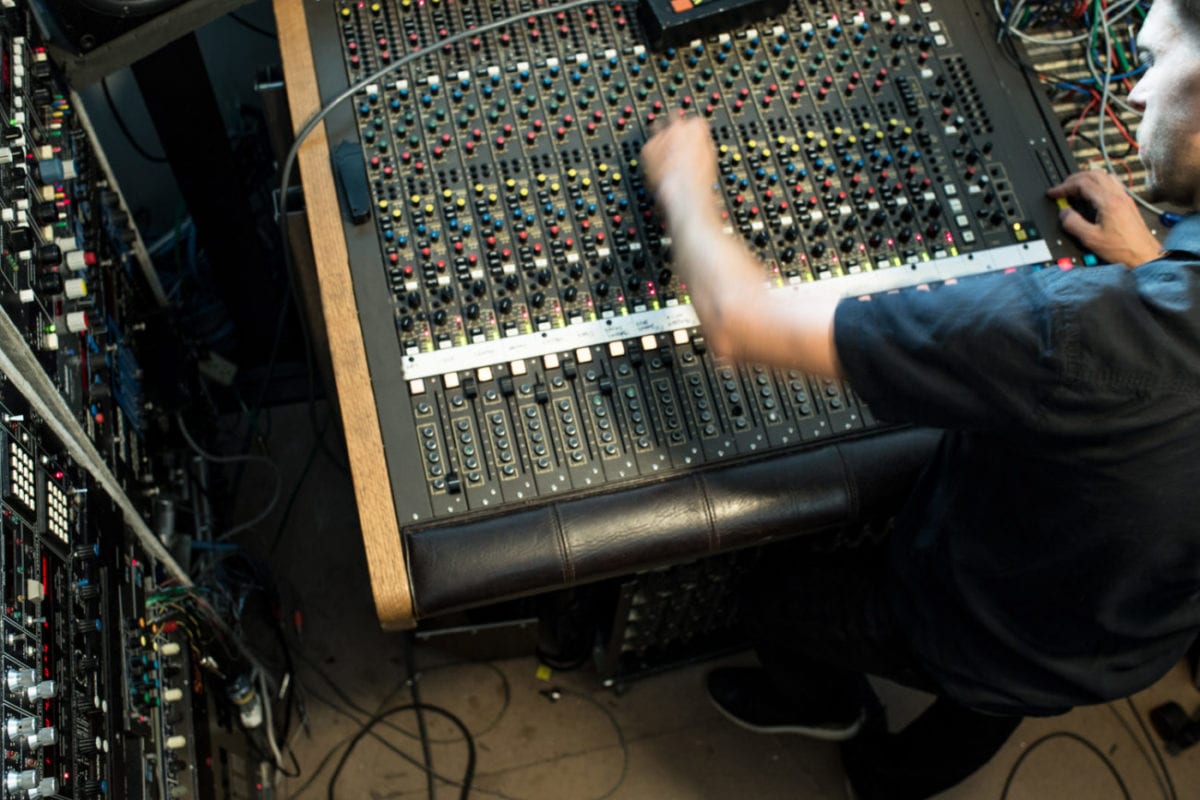
Josh asked, "What do you want to inscribe on the record?" I replied "Make audio tactile."
In early 2016 I moved to our current place, and built a studio inside, this time acoustically treated for making noise. With the help of my father and my trusty Icelandic friends, we floated the floor + walls, installed double paned glass windows, added 2 separate circuits, built double glass doors, and with all of the gear installed, there’s just enough room for 2 people in a room.
It’s equal parts Millennium Falcon and Apollo 11 capsule. I spend 4 months building the room, 1 month wiring everything together, and then we were like… We have to get this record out… we’ve been talking about it for almost 6 years now. We’re completely tracked and I thought at the last second, ok, now I should probably make sure this deck is properly aligned.
I hired an old-time tape guy, Carl Faruggia, to align the deck and he’s like… “This isn’t going to work. What you hear in recording is going to be different when you play back. You need to find a new machine.” So I jumped on Reverb and tracked down another Ampex 440C, this time in perfect working order… or so we’re told. We go to pick it up, he does an alignment test and finds it’s “mostly” working, but needs work. As we’re walking it out into the Jeep, I see two studio doors that the studio just dumped out; and what I just spent about $500 on to install in my apartment. Timing really is everything.
A week later, we’re finally mixing down everything and this is where the fun finally begins, practically 15 years after I started rebuilding my studio in NYC from nothing. We printed the first track, a studio experiment called “location.001” where we got a stuck loop in a Lexicon PrimeTime, then bounce the second delay output to a second track, and finally to mastering tape.
On “Breaking Up”, we flipped the tape backwards, printed the vocals and guitars through reverb and bounced that to a spare track, then played it forwards to get a “reverse reverb trail” heard all over Love & Rockets, Tones on Tail, Siouxsie and the Banshees, even the Beatles. We snuck some of these tricks in between the other tracks, muting portions, playing them half speed in reverse, or cranking up the reverb send and time while the machine was in fast forward, then letting it die down to start off the bed of the track, like on “another time”.
With two tapes in hand, we were finally ready to go to mastering; and I was adamant about having this stay in the analog realm from start to finish. Josh Bonati was recommended by Ryan Martin of DAIS Records. Despite his beefed up Studer mastering deck, most people just come to him with files or master tapes, he dumps it into the computer, and back to his Neumann mastering lathe. Instead, we went straight in from tape to lathe, to cut the master lacquer. Josh asked, “What do you want to inscribe on the record?” I replied “Make audio tactile.”

"Creativity and exploration should not be hindered or dictated by using a computer instead of an actual analog synth."
Do you feel the computer is sometimes an hindrance in the development of ideas/ technical sound craft?
Todd: I think the computer is capable of so much, that to me, its inability breakdown like most of my antiquated shit is the hindrance with it. We tried to take some of Charles’s material as Vertical Silence and “convert” it to analog, using the same Arp Odyssey synths his plugin was supposed to emulate. While the “Oddity” is an incredible sounding plugin, it didn’t sound the same when we matched it up with the hardware version of the synth, which was frustrating.
Both were different, but not either were ideal; I wanted the hardware to sync to the BPM of the incoming MIDI clock, but without a severe mod, it was going to be impossible to do that.. Something that we have to live with, but in a way, it allows other things to happen that you wouldn’t think to do on the computer.
Hardware, even when multi tracked, is still a bit like spinning plates. You have to get everything in motion, all with the same clock, or not, and then try to grow third and fourth hands to continue to fuck with the sound while the tape is rolling. When you’re in a purely digital environment, you can have the filter sweep drawn with precise sinewave functions that sync to the clock; you can insert silence or a break as many times as you wish without losing the timing. In the analogue domain, it’s a bit like doing math, blindfolded.
Without seeing it, you’re trusting your musical or production knowledge of when something’s going on too long, or giving it space based on the feeling of the groove or rhythm of the song, instead of “well this looks boring, so I should add a fill at 16, 32, 64, and 80, and end it around bar 160”. I don’t think Can, Brian Eno, Cabaret Voltaire, etc. had a timeline to go back and look at their “project files” to determine when things should come in or out; it was about rehearsal, practice, and feeling it out when your ears what sounds good.
In recording the album, we discovered ways to give it depth, from tracking drums at 15 IPS, or leaving the blemishes from a live mic prior to the guitar part entering the track, etc. We made decisions that we weren’t prone to doing when you get to zoom in and out and nudge, delete, fade or loop the parts that worked, and erase the parts that didn’t. We used our ears instead of our eyes. We didn’t go back and punch in, quantize or fix flat notes; we allowed errors if the whole of the song was good enough.
We listened to the sound and the groove, instead of relying on a pre-determined grid of transients of where things “should” be. I think Charles’s drumming and Andries’s bass work well on this; sometimes late, sometimes early, but not precisely on the dot, which I think is usually a good thing. When you try to apply ‘humanize’ or synthetic randomization to events in the digital realm, it often has a “forced” element to it that we did our best to avoid.

"The three of us all work in creative spaces, with Charles being an interactive producer, Andries, a photographer, and myself, a director, so if anything, Interval is the sonic analogue to our visual day gigs."
How’s your creative/recording process with Interval? More of a hard-fought battle, a fun recreation or a rough electric discharge?
Charles: Interval has been a relatively slow evolution of being obsessed with the ’70s and ’80s aesthetics (which is where we started – as that tech was being replaced by digital synths) and realising that we could not replicate the past even with all the same gear. So we have merged that retro DIY with our techno producer and DJ knowledge to form something that sits in the middle of it all and feels familiar, new and retro.
Todd: The three of us all work in creative spaces, with Charles being an interactive producer, Andries, a photographer, and myself, a director, so if anything, Interval is the sonic analogue to our visual day gigs. I try to intertwine the two worlds as much as possible, which means that some days I’ve spent all day behind a camera or monitor and tablet, and for a release, standing in front of the console and machines is cathartic + relaxing. Other days, I’m so frustrated at the limit of my knowledge of electrical engineering, whether I’m building a new module or synth or fixing my many dead or broken machines, the immediacy of playing guitar, bass or drums makes the “pain” go away.
The great Peter Weiss – aka Narcotic Syntax/Hypnobeat – spoke of the album as a reflection on love and death, Eros and Thanatos. Is it an image that suits your perspective?
Todd: Peter and I met a long time ago through Zip, or maybe Ricardo Villalobos; he and I connected on the house / techno side of things, and remained acquaintances, then last year, I just figured out something he said in 2001 that finally registered… that he would “just chain a bunch of drum machines together for a live set” — and that was him describing both Hypnobeat and Narcotic Syntax! He really hit the nail on the head with Eros and Thanatos, and I think he sees the lenses we’re looking through; the songs are about love, and the death of that love, allowing it to dissipate, to reborn as something new again.
What kind of energy and wind does your background in noise/punk/industrial breathe in your compositions? How does it inflect the way you produce electronic music?
Charles: The most exciting thing for us is the lack of rules, that’s really energising. It’s refreshing to not have labels and strict rules for staying inside a genre. You’d think that folks that listen to electronic music would be open to something that embraces electronic music but pushes it into the darkness a bit, but at the moment we’re an acquired taste. Evidenced by distributors and stores not being sure about which section to put the record in.
Todd: We often joke that Interval and HELIC.AL is our mid-life crisis; I don’t know any other idiots who are stupid enough to start a 3-piece band at age 40, and wait until we’re almost 46 before the first record comes out. Embarrassingly, it’s like we’re finally living out a childhood fantasy, as Charles and I used to go to the same shows in the late ’80s, both wondering, “How in the hell do we get there?” Well, we got there, and traveled the world with house and techno.
Now we’re doing it again, but we can’t really just funnel those fans of our 25 years of electronic music to suddenly like our new post-punk, EBM and industrial work. From a historical perspective, early electronic music, beyond just that from Kraftwerk, Eno… etc. was transfixed with a DIY approach to manipulation and rudimentary sequencing, splicing newsreel clips, horror films, porn and Southern evangelist ministers — the stuff Cabaret Voltaire,Throbbing Gristle, DAF / Liaisons Dangereuses pioneered could be heard 20 years later in Green Velvet’s ‘Preacher Man’ and numerous tracks by Carl Craig, from Paperclip People to 69. So after dabbling in all of that — Charles with sampling, and me with analogue sequencing, it felt time that we had to get back to what led us to this music in the first place.
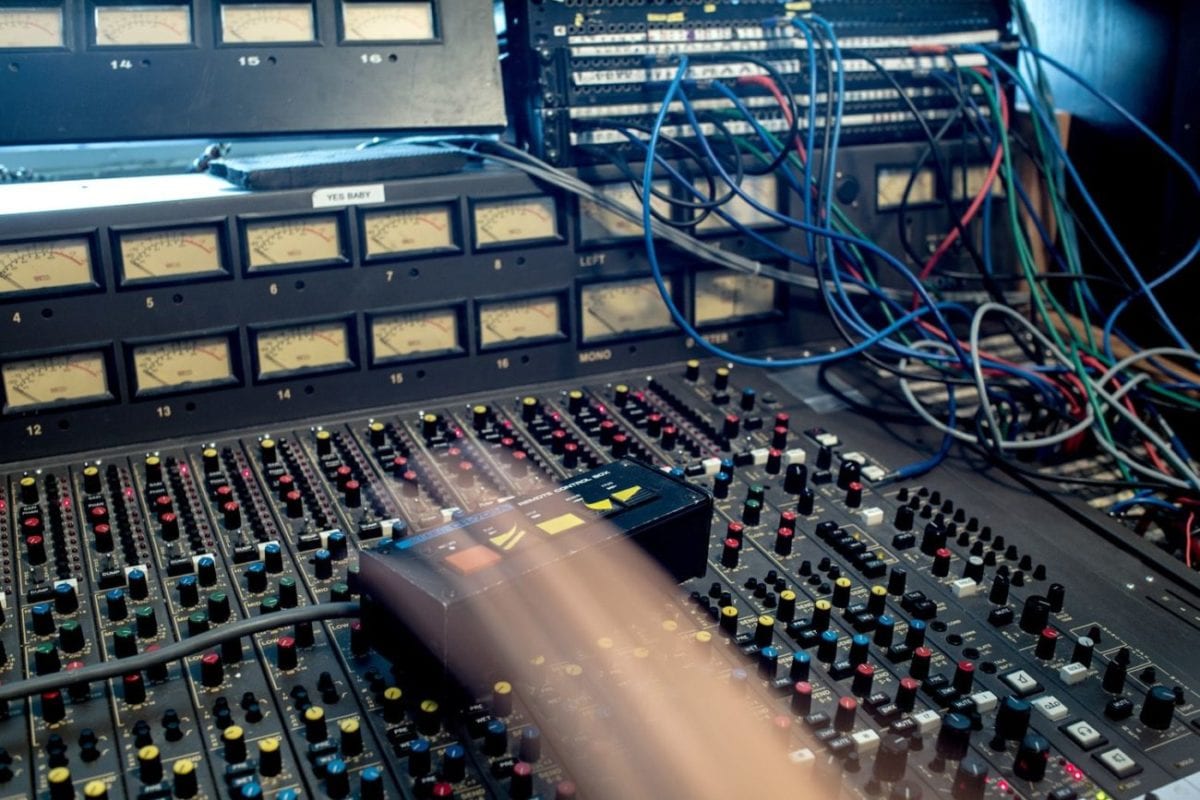
"Our art might not be sent out into space on gold platters, but at some point, people will discover it physically, not just absorbing it online."
Now let’s talk about the mother ship, HELIC.AL. How was the label born and what’s triggered its creation?
Todd: We’re raised to not speak about religion or politics publicly in this country, but to be honest, HELIC.AL’s inception came from politics — in the scene. We had connections to interested high-profile labels, but due to release schedule, proximity, or territory, we couldn’t justify the gain in working with them would equal the result that we have now, which is complete creative freedom. We walked away from deals that would maybe put us out in front on the digital side, but had so much blood, sweat and tears in making it “analogue” that we couldn’t just have the end result be a digitally streamed file.
We thought about the layers of ephemera; from print, experiential, installation and physical media that shaped us getting into it, and figured, we have to leave our mark, and inspire others to do the same. Our art might not be sent out into space on gold platters, but at some point, people will discover it physically, not just absorbing it online. There’s collectively 60 years of art & music making experience between us, and while some people make a painting, take a photo, shoot a film, mold a sculpture, or release a record, we’re doing it all, and HELIC.AL is the platform to showcase it.
You present it as a “constrained exercise to break from restrictions”. What kind of restrictions are you looking to bypass?
Charles: The restrictions of medium and genre. We want to make film, music, books, performance, installations, fashion and great tasting vegan cookies! Let’s hope the powers that be don’t label us anytime soon. If they can package us and sell us we’ll be restricted to the rules again. At that point the party is over and its time to move on.
Todd: I think that it’s all too easy, either digitally or in the analogue realm, to just jump in and make a “EBM-inspired” dark techno song, and be tomorrow’s darling on some site, blog, etc. Our main restriction is the pressure to generate numbers; what’s your social media pull, how many people have charted, downloaded, purchased, or streamed the track / album / DJ mix.
Our “focus” audience is measured in single digits: 1. The one person who is affected by it. Ultimately that may grow to become tens, hundreds, or thousands; but it starts with one person. As Charles and I fund the label from our day jobs, we’re not caving under pressure to release “hits”; we’re here to take risks. Not everything has to have a 4/4, 125 BPM, DJ-friendly mix.
We don’t need or want a “big name producer” to remix the next “single” to maximize sales, airplay, and attractiveness to get it placed in an upcoming film, commercial, and so on. If that accidentally happens, great, but we’re not writing albums to fill some arbitrary commercial gap to maximize the label or artist’s profits. If we work with people; we want to partner and collaborate with them, or we just step back and press record and try to make something beyond what just one of us could have done alone in our room. We have the studio, equipment and expertise to think of an idea, and articulate it.

"If we vibe personally, then we might vibe creatively. It’s a way to communicate, using textures, shapes, tones, notes, and forms that say so much without saying anything at all."
What are the label’s aim and objectives?
Charles: To be a media platform to build a unique aesthetic on. To collaborate with friends from the past and ones to come in the future.
Todd: HELIC.AL’s aim is to provide a blank canvas, the tools, the paint, and the time to allow for our ideas and those close to us to come to fruition — from working with artists from the 80’s, to those born in the 80’s, and everyone in between. As one develops their craft, they might get pigeonholed into that style of working, and we’re here as an opportunity to throw a wrench in it and fuck it up.
What about the name? What does it mean to you?
Todd: Helical scanning is the process of recording and playback of analogue video using a high speed drum, spinning across slow moving tape magnetic tape at 3 1/2” IPS. It was developed as way to store high fidelity video in a low-cost format. Since the speed of the audio tape transport dictated the quality of audio when played back; the faster it moved, the more space devoted to recording the signal, but at a loss for time. So by spinning the recording and playback head at a high speed, but moving the tape and a slow speed, it crammed the information needed to reproduce full-colour, 2 hour film onto a small cartridge — which is how all VCRs work. It was the physical analogy to my vocations; a filmmaker and musician devoted to exploring the tactile nature of ideas.
The label seems to be structured around tight-knit relationships and a sense of utter convergence in both music and ethics, closer to that of a family than a cold working environment. Is this important for you to keep things at a human scale, between people you know from “real life” encounters?
Charles: Yes, very important! It’s the foundation of how the label came to be. We have been friends and musical comrades for so long that we don’t know any different.
Todd: If it’s not at a human scale, then what is it? I think art, music, film, and words are what motivate and cause us to do anything; to love, hate, embrace, disdain. If we vibe personally, then we might vibe creatively. It’s a way to communicate, using textures, shapes, tones, notes, and forms that say so much without saying anything at all. Kindred spirits have a way of finding one another, and so, the label’s structure is already a strong network of friends who have been on tour together, played shows, and worked on a variety of pieces before HELIC.AL existed. It acts like a creative marriage — the parts are great on their own, but even greater when combined in unique ways.
Any idea of the direction things will take next? Have you already new releases scheduled for later in the year?
Charles: We have a good cue of releases, working with a small pool of artists as well as working on Interval side projects produced by us. We are building our own aesthetic so we are heading into uncharted territories on many fronts, at least for us personally. We have always been interested in using more than one medium to create and we will continue with that moving forward.
Todd: Next up is Artefactos de Dolor; a studio project that began as experimental scratch tracks from Charles and I trying out weird stuff in the studio. We had things that deviated too far from Interval’s sound that didn’t seem to fit. I had been talking to vocalist Alyssa Barrera about doing a project together, so I invited her to do some vocals in Spanish, her native tongue.
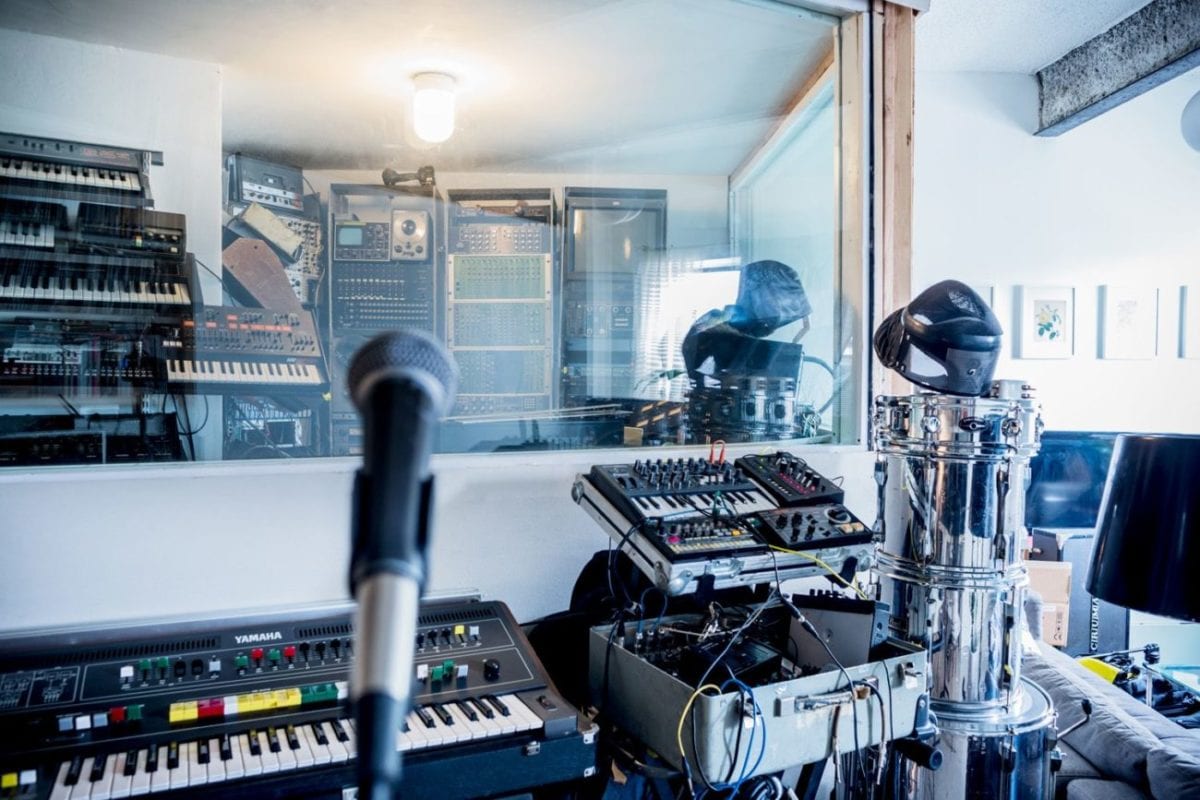
"In the analogue domain, it's a bit like doing math, blindfolded."
She sang over a few of the tracks and they really worked well; it was like a Spanish female CH-BB. The next task was to figure out how to perform it live. One caveat in working in a non-digital environment, is that we have no instant recall of a saved state of the recording session. We find a sweet spot on the synth, sequencer or effects unit and basically have to record immediately, knowing how much of a challenge it would be to reproduce it each time.
Charles: Analogue, baby!
Todd: So we dumped the sequenced elements onto a Nagra reel to reel as our backing track. Alyssa created costumes for herself in a variety of persona, and Charles and I strip to black pants and fencing masks, putting her in the forefront. After that, we’ve got a number of options; I/TMSZ, my collaboration with Crash Course in Science’s Michael Zodorozny; a double LP of Vertical Silence, Charles’s solo project, which is essentially pop music done by members of EBM, goth, industrial and post-punk bands; SSPS + Gramma doing a split LP, a double LP of Interval, and a whole lot more.
How’s your summer schedule looking right now?
Charles: Looking busy! Big personal trips to Asia on the immediate horizon for both of us. Firming up some European dates after we return. In the studio we’re pushing hard to get some projects into the pipeline. We got more than years worth of releases that just need recorded, mixed and mastered. Always writing new stuff. We live in NYC and there is always too much to do, something to see every day of the week.
Todd: The number one thing on my schedule is getting married in two weeks. After that are the release events, screening the 7 films for the album in NYC, LA & SF for Interval. We’re working on a handful of dates for our first European tour with the label’s core artists. As Charles said, the studio is a very hands-on process, and as much as I’d like to take it with me, I can only work on it in one physical place at this point in time, and those constrained exercises do free us from restrictions… of being connected to a mobile device, laptop, distracted by checking in, etc. We’ve got a lot of things to say, and now, a lot of different ways in which to say them.
Transmit is out now, order a vinyl copy from Juno.
TRACKLIST
A1. Location.001
A2. Breaking Up
A3. Waver
A4. Arc
B1. Wane
B2. Stored
B3. Another Time
Discover more about Interval and HELIC.AL on Inverted Audio.
Charles NoelIntervalTodd SinesHELIC.AL5 June 2017DarkwaveEBMIndustrialPost-Punk